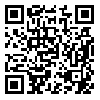Volume 15, Issue 4 (2024)
LRR 2024, 15(4): 3-0 |
Back to browse issues page
Download citation:
BibTeX | RIS | EndNote | Medlars | ProCite | Reference Manager | RefWorks
Send citation to:



BibTeX | RIS | EndNote | Medlars | ProCite | Reference Manager | RefWorks
Send citation to:
Hatefi M. The network of implicit interpretation in the Code of Criminal Procedure from a Functional Perspective. LRR 2024; 15 (4) :3-0
URL: http://lrr.modares.ac.ir/article-14-59360-en.html
URL: http://lrr.modares.ac.ir/article-14-59360-en.html
Assistant professor at Institute for Humanities and Cultural Studies , m.hatefi@ihcs.ac.ir
Abstract: (3017 Views)
Previous researches have considered presupposed knowledge as a communicational difficulty in conceiving the meaning of the articles of the legal cods by the reader / addressee. The main question is this: to which extent is the scope of the presumed knowledge? The hypothesis in this research, based on the functional grammar approach, is that the scope of presumed knowledge extends to the extent that in-text and out-of-text references expand the scope of text and meaning. We, in implementation, based on some selective and incidental articles from the Code of Criminal Procedure (CCP), have followed the scope of their references in order to discover its in-text and out-of-text network. The research results show that the domain of presumed knowledge, networked, includes all law codes, legal texts, legal theories, judicial structure, and related knowledge. The following types of references continuously delay the meaning of the clause and article to the last frontiers of presupposed knowledge: explicit references (in-text and out-of-text), implicit references (in-text and out-of-text) including: heterogeneous references, concurrent references, iterative references, and negative reference. Heterogeneous references show that criminal laws (Code of Criminal Procedure, Penal Code, and other criminal codes) focus on the "crime" as the core signifier reflecting the network of knowledge which is presupposed. The results show that any reference, even explicit reference, creates a level of communication complexity and becomes more difficult when the articles, rules, and texts refer to each other back and forth.
Keywords: Criminal Procedur Code", Systemic Functional Grammar", presupposed knowledge", types of referrals", referral network"
Send email to the article author
| Rights and permissions | |
 |
This work is licensed under a Creative Commons Attribution-NonCommercial 4.0 International License. |









